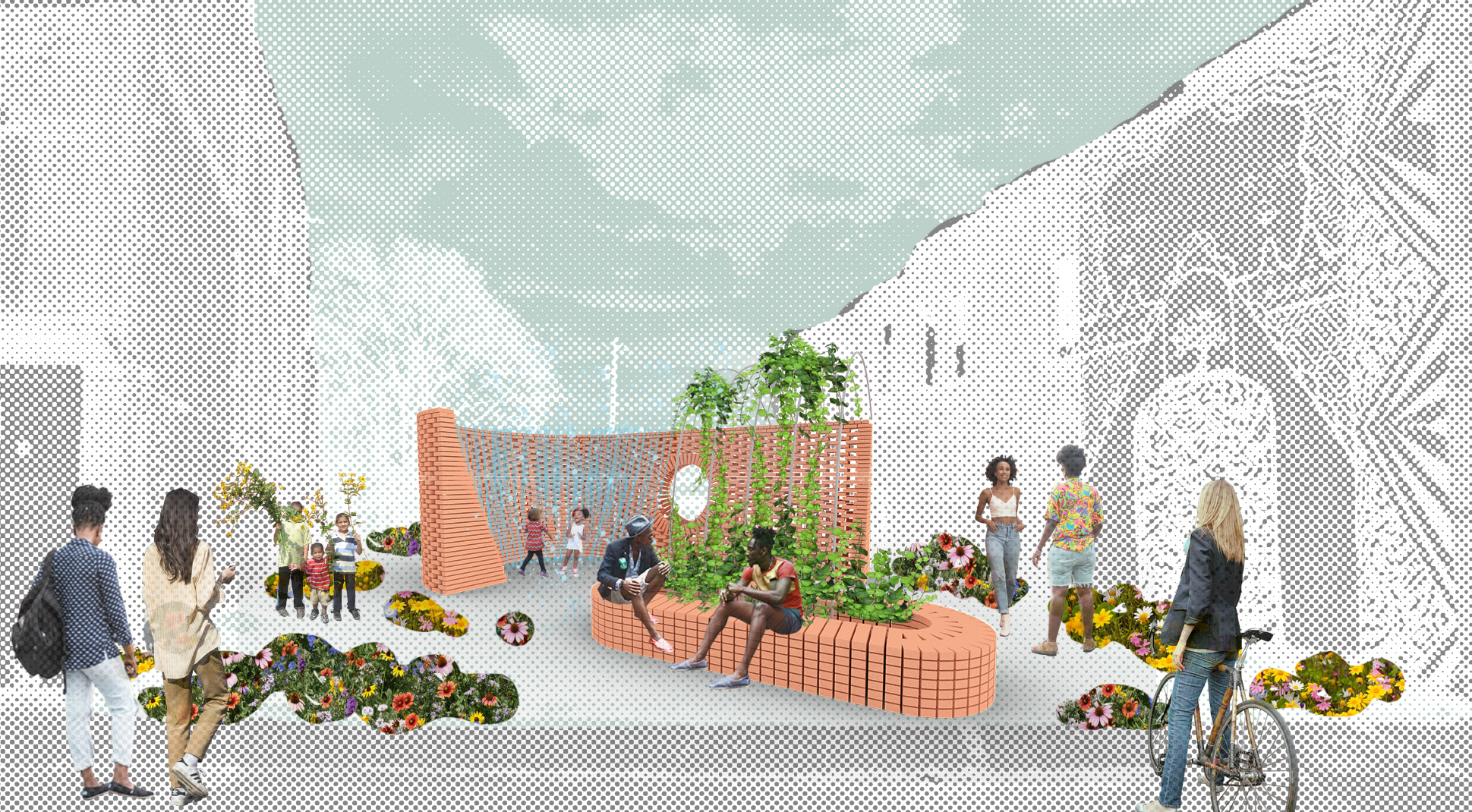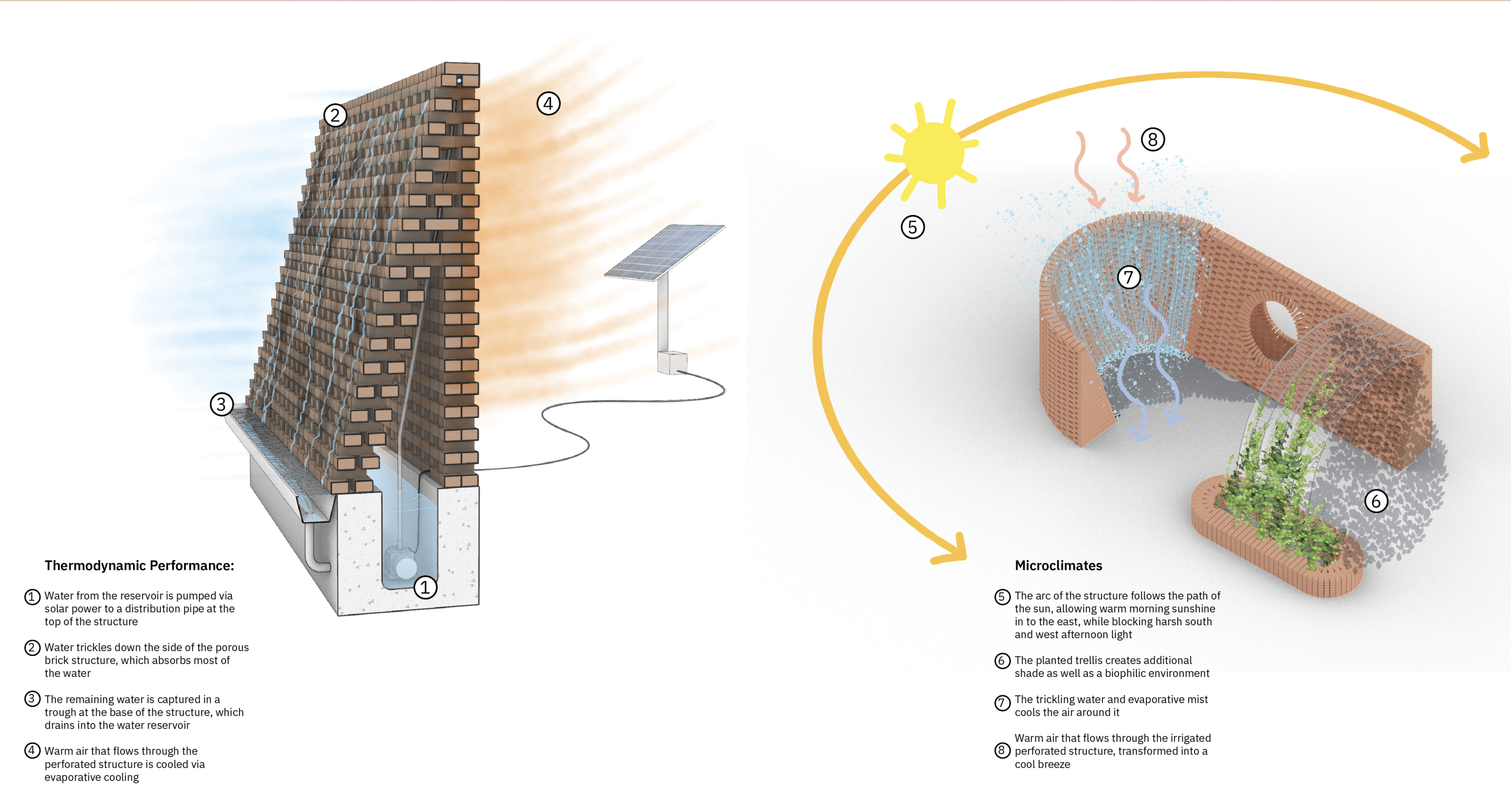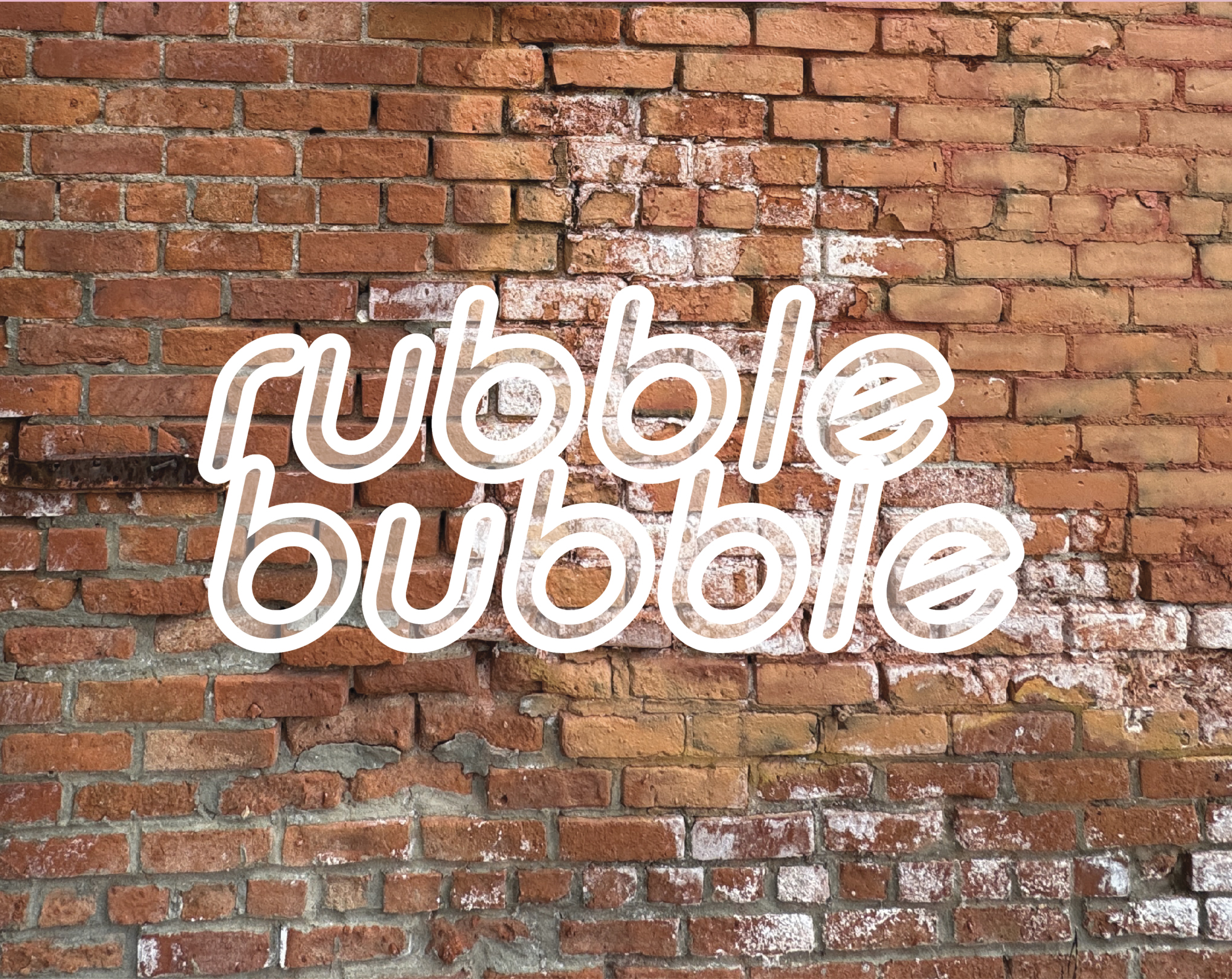rubble bubble
CLIENT: undisclosed
LOCATION: DETROIT, MI
YEAR: unbuilt
rubble bubble is an experiment in using salvaged construction materials to create an assemblage of regenerative microclimates within one architectural structure. The installation is a call for regenerative design practices and the positive augmentation of climate through building and urban design. The proposal focuses on uncovering a beneficial function for the city’s discarded bricks. These discards are not fit for architectural re-use, but they could be re-employed in creative ways that contribute positively to the local urban landscape.
rubble bubble combines low-tech and hi-tech methods for construction and performance. Brick has remarkable structural integrity and often employed for its thermal mass properties. This masonry structure also cools the surrounding air though evaporative cooling. Water is pumped from a reservoir via a solar-powered pump to the top of the structure and runs down the side of the porous structure, which absorbs some of the water. The remaining water is collected in a trough at the base of the structure and drains back into the reservoir. Hot air passes through the perforated structure and aids in the evaporation of the water and cools the surrounding air. The structure follows the arc of the sun to create shade at key times of day and incorporates trellised plants for additional shade and biophilia.
the short term impact is the salvaging of discarded materials, saving them from the landfill, and transforming them into a self-sustaining, environmentally rich public space. In the long-term, ‘rubble bubble’ explores the technology of evaporative cooling and other microclimactic moves within the local climate. It localizes practices that, globally, design studios have already been utilizing and improving upon. It transforms a disused lot into a urban oasis – a pleasant surprise for any passersby to encounter and enjoy.


